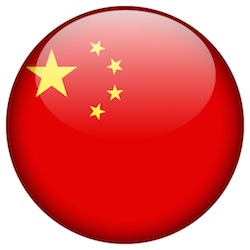Investment Strategies
ANALYSIS: China's A-Shares May Enter Global Investment Orbit This Week

The prospect that China's A-shares could be included in major investment benchmarks is another part of the jigsaw of growing international access to its markets.
In an event that could prompt large investment flows,
benchmark provider Morgan Stanley Capital International, or
MSCI, is due to decide as
soon as tomorrow whether to include mainland China’s A-shares
equities in MSCI’s world and emerging market indices.
If MSCI decides that shares listed in the world’s second-largest
economy are fit for inclusion, it could create a virtuous circle
of rising liquidity in such shares, because a far wider pool of
international investors, such as pension and life funds, among
others, will be able to hold them under their mandates.
Such a move will represent a major step for a country that has
already sought to widen foreign access to its capital and
financial markets through developments such as the Hong
Kong/Shanghai Stock Connect link and the broadening of foreign
investor quotas.
And while the renminbi currency is not yet a fully floating one,
that day is surely approaching. Another closely-watched decision
will be whether, and in what ways, the International Monetary
Fund decides to include the Chinese currency in the basket of
currencies that composes the Special Drawing Right. (SDRs are
supplementary foreign exchange reserve assets defined and
maintained by the IMF and have come into the spotlight amid
periods of financial stress, and worries about the strength of
the dollar.)
The prospect of such a move prompted Jian Shi Cortesi, investment
manager at GAM, the Zurich-listed investment house, to
comment.
“Increasing the allocation to Chinese equities in the MSCI world
and emerging market indices could markedly boost flow levels for
a number of reasons. Most international investors are not
currently buying Chinese A-shares. Sourcing information is
challenging for many investors due to the language barrier, and
many are not prepared to buy A-shares as China is not yet
included in the index,” she said.
A few days ago, index provider FTSE Russell announced that it
will launch two transitional indexes that include China A-shares,
a move that will, wealth managers say, affect Chinese market
inflows significantly. With MSCI’s decision on including A-shares
due on 9 June, demand for these stocks could cause liquidity
issues, Cortesi said.
Separately, US investment management giant Vanguard, overseeing more than $3.3 trillion of assets, has announced it will include Chinese mainland A-shares in one of its funds, the Vanguard Emerging Markets Stock Index Fund, and its exchange traded fund share class.
Big move
GAM’s Cortesi said: “All China related ETFs will have to
start buying these Chinese stocks when they are included in the
benchmarks. Approximately 25 per cent of the MSCI Emerging
Markets Index is currently allocated to China, but with the
addition of Chinese A-shares and US ADRs – Chinese equities
listed on US exchanges – this could increase to more than 40 per
cent of the index.
“The timing of the inclusion is not certain. There could be a
series of gradual weighting increases over a few years; this
seems sensible given there needs to be enough liquidity in the
market for the buy side to purchase underlying A-shares. However,
currently China’s QFII schemes and Stock Connect programme have
quotas and can digest only a certain amount of flows, and if all
index providers announce an inclusion in short proximity, the
potential for market dislocation could be quite large. As all
ETFs have to purchase the underlying shares on the same day that
an index provider’s change to its allocation comes into effect,
flows into US-listed Chinese companies and Chinese A-shares could
be very significant,” she added.
“US-listed ADRs from China will be added into the existing MSCI
China Index, which currently tracks Hong Kong listed Chinese
companies, after they have been evaluated during the index review
in November 2015. This will result in significant inflows into
ADRs, but outflows from current index constituents,” Cortesi
added.
Bubble trouble or growing pains?
Regardless of what will be the medium-term effect of including
A-shares in global benchmarks such as from MSCI, recent price
movements in equity markets in China have been dramatic,
prompting some concerns.
“An investor would have needed to buy the Euro Stoxx 50 back in
late 1996 to have equaled the price appreciation of Shenzhen’s
rally in the past five months. In fact, the combined wealth
created this year by the Shanghai and Shenzhen markets could
purchase all the property in London twice,” James Purcell, global
investment office, UBS Wealth Management CIO, and Hyde Chen,
equity analyst, UBS WM CIO, said in a recent note.
“Doubling your money normally involves visiting a roulette table
and picking a colour correctly. Or making a good-hearted wager
with a friend. This year these methods have been joined by
investing in China’s Shenzhen composite equity market, which has
delivered a stunning 114 per cent price appreciation. Let’s
put the Chinese rally into context,” the UBS managers said.
“Few would argue that the rally has been fundamentally driven.
Earnings estimates have actually fallen and the Chinese economy
continues to deteriorate. Year-over-year fixed asset investment
growth is the slowest it’s been since 2000. Industrial production
is increasing at a much reduced pace, one last seen in 2008. And
retail sales growth is limping along at 2006 levels,” they
continued.
UBS notes that mainland China-listed equities trade at an average
premium of 30 per cent, with some as high as 200 per cent, a
dislocation that may fade in time if authorities remove capital
barriers.
In any event, whatever happens this week at MSCI, China’s
capital and equity markets look set to continue becoming more
prominent in the portfolio holdings of global investors.